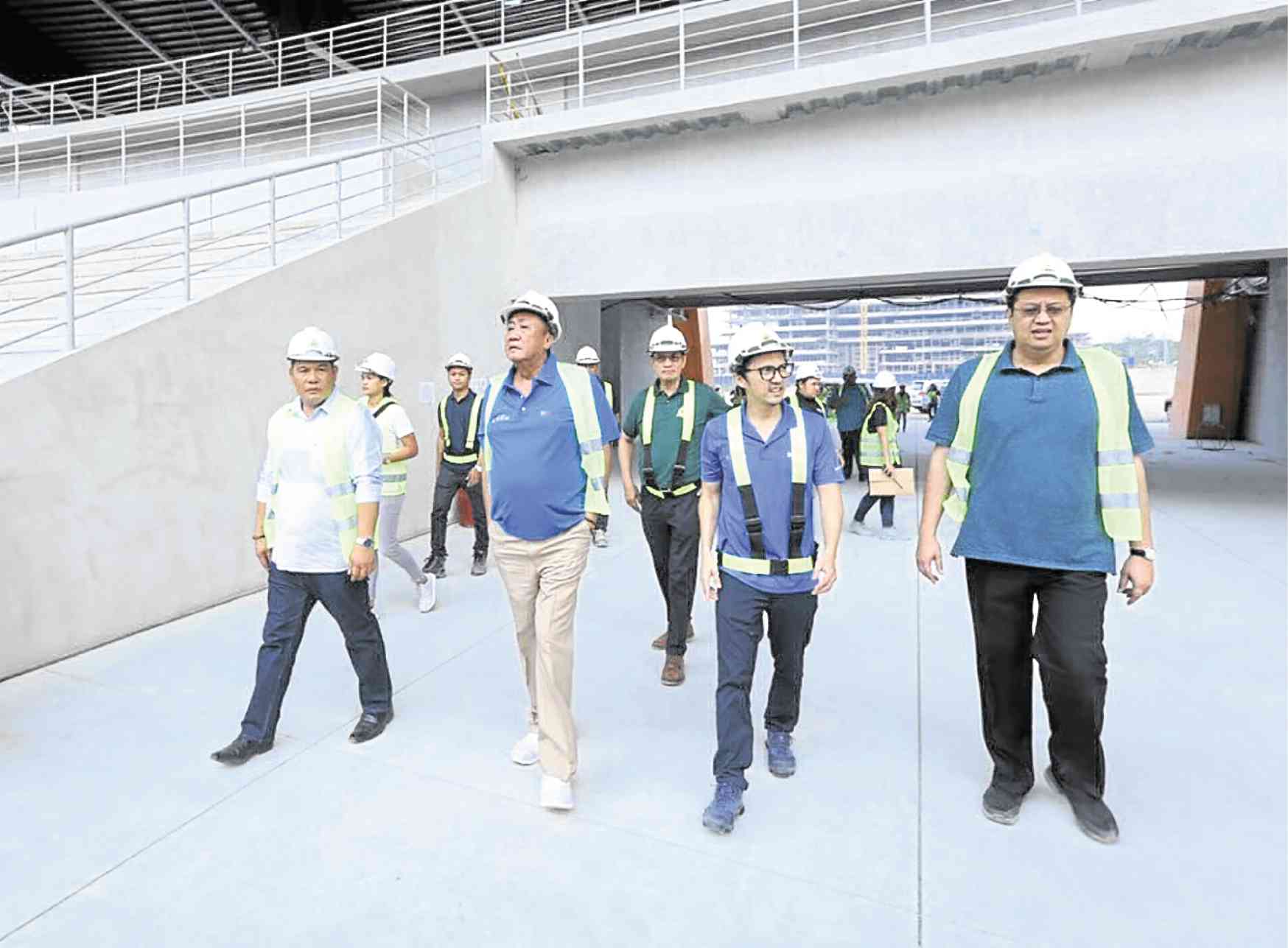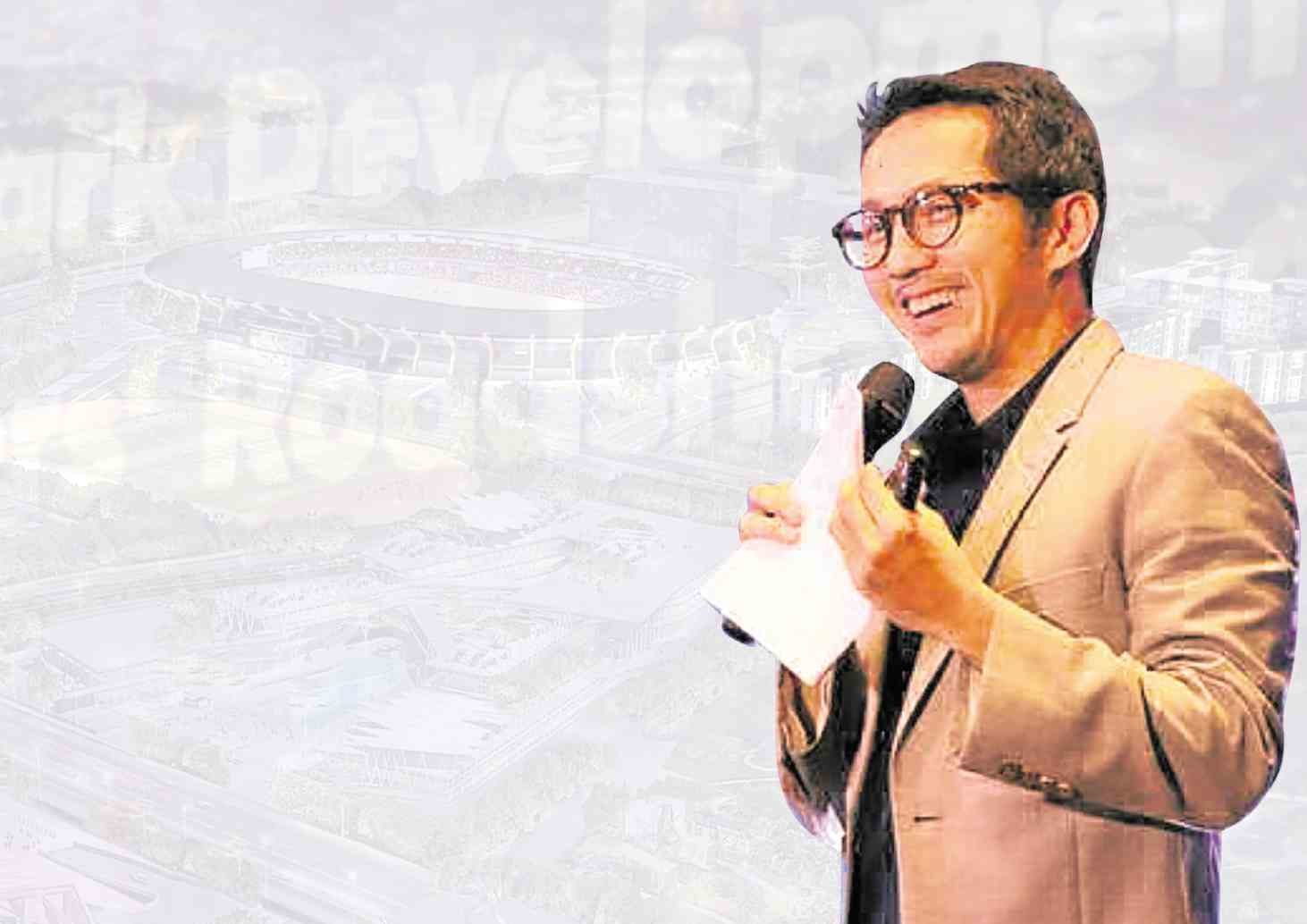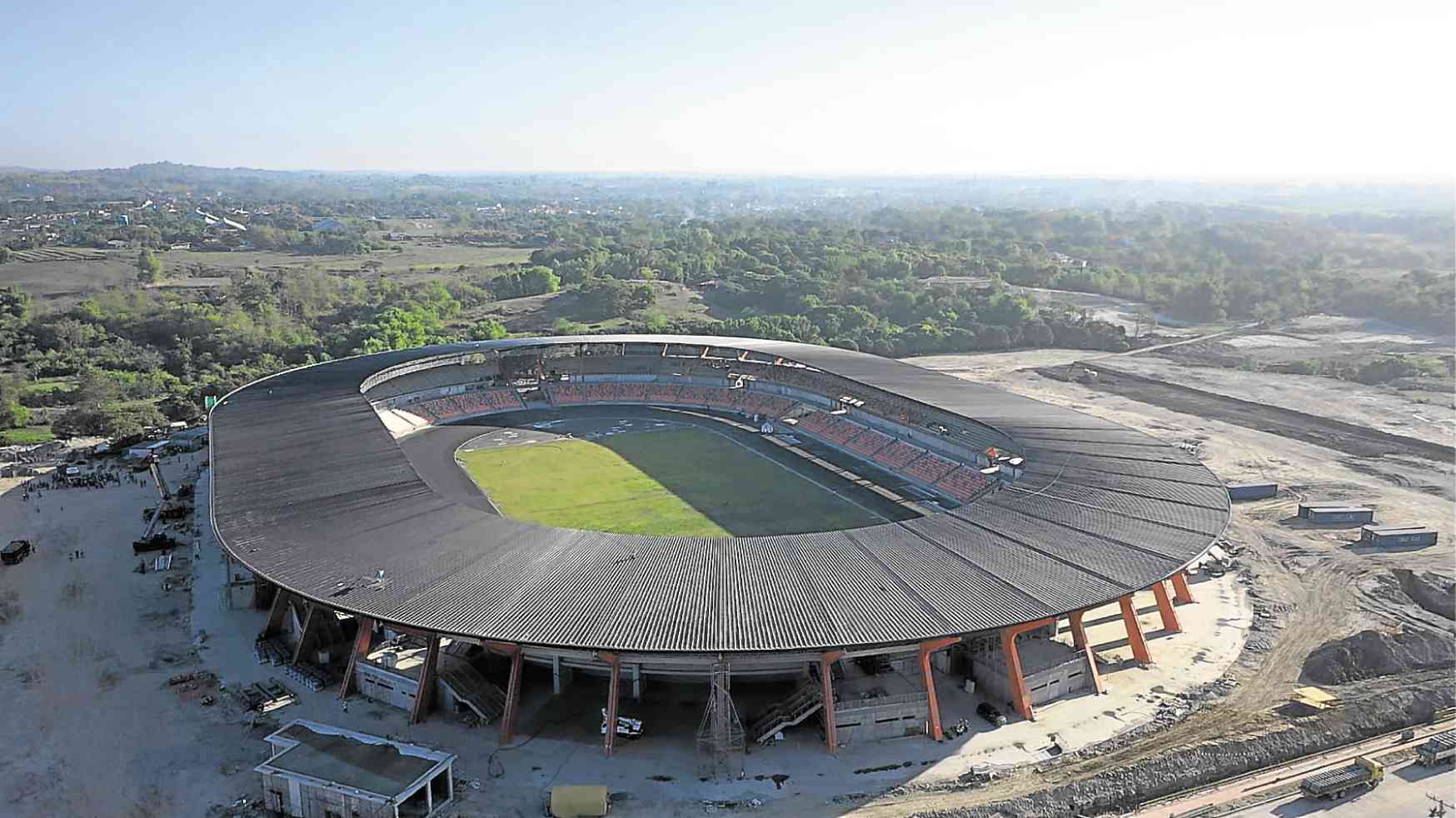Dizon: Man of the hour
Capas, Tarlac—He stood by the door, his white hard hat on one hand, while the other held a phone to his ear.
It was only 8 a.m., but Vivencio B. Dizon, president and CEO of the state-run Bases Conversion and Development Authority (BCDA), was already throwing instructions to the other end of the line, while several others looked on. He has, Inquirer learned, already put in a full two hours of work by this time—having just completed his usual rounds of the hustling construction site here—and was then running through some of his observations following this
early morning inspection.
There was clearly a certain sense of urgency on the part of Dizon, and understandably so.
The construction site he just inspected was for the first phase (comprising some 40 hectares) of the National Government Administrative Center (NGAC), which would include two government buildings; a world class sports complex that will serve as one of the venues for the 30th SEA Games scheduled in the last quarter of 2019; and housing facilities to accommodate athletes and government workers.
And that NGAC is part of a much bigger New Clark City—a 9,450-ha expanse that is being transformed to become the country’s first smart, disaster-resilient and green community, or simply, an archetype of the metropolis of the future.
Article continues after this advertisement
Officials from BCDA and Department of Transportation inspect the facilitieswithin the National Government Administrative Center.
A few minutes later, Dizon joined Inquirer Property at the NGAC Integrated Operational Center building, located right within the construction site in Capas, sharing with much passion and fervor not just updates on the NGAC, but the overall vision behind this modern metropolis.
Article continues after this advertisement“This is where the growth will be,” Dizon claimed, referring to the New Clark City. “I think it’s a welcome development that most of the growth will no longer be in Metro Manila, but will rather be outside.”
“Metro Manila is congested and so we need to develop areas outside. That’s why the focus of the Duterte government has been Clark, which should’ve been done years ago. Now, we’re playing catch up,” he added.

The first phase of the National Government Administrative Center (NGAC) is set to be completed by end August this year.
NGAC completion
All eyes are now on the completion of Phase 1 of NGAC, which is being developed by Malaysian infrastructure conglomerate AlloyMTD Group, through its local unit MTD Philippines Inc. The group, which is investing some P13 billion to develop the first 40 ha, broke ground only in January last year, giving MTD Philippines a tight schedule.
But Dizon expressed confidence that all the facilities will be completed on time.
“We’re expecting completion (of the first phase) by August 31 so that’s a little over three months from now. And then, we start testing the facilities as early as July… then formally inaugurate this whole area first week of October,” he said. “We’re just in Phase 1 and city development takes years, not just of development, but also of planning. We cannot afford to make another mistake here. We already made huge mistakes in our other urban centers—Metro Manila is the case in point.”
Masterplan
The BCDA chief thus emphasized how crucial planning is to the overall success of this future modern metropolis.
“When we took over the planning (for New Clark City), we added other important dimensions. Specifically, we added Surbana Jurong of Singapore, together with our Japanese partners, to add strength to the masterplan and to really make it future proof. Now Clark looks great, with its wide open spaces. But if this is not planned well and if the masterplan is not implemented, then it might just end up being another Metro Manila in 50 years’ time,” Dizon said.
“So we tried to improve and make the masterplan better… The way this has been planned, the thought, diligence and expertise that have been put into this, would be at par with the best cities in the world,” he further explained.
For instance, high-rise developments are not allowed within the NGAC, as based on the masterplan. The tallest would be the government buildings at seven stories.
The rationale behind this is that low to mid-rise buildings are usually safer and more
resilient. Also, in many progressive cities around the world such as in Washington DC, Canberra and Paris, the government centers and capitol do not allow high rises for security purposes.
Dizon also pointed out that the addition of Surbana Jurong as project development manager was a crucial move
because it is responsible for crafting urban design standards and guidelines (UDSG), which will determine whether a project within that bigger development should be allowed to proceed or not.
“We have learned from the challenges and mistakes of the past. For the private sector, it’s about the profit and in land development, profit is usually measured by sqm. The developers’ interest is to maximize the land. There’s nothing wrong with this (making a profit), but the problem starts when it is not regulated or controlled. So you end up with the Metro Manila situation where the
easements are very narrow, sidewalks are practically non existent, and there are no provisions for public transport,” Dizon explained.
“That’s why here in Clark, the government has to exert control and that starts with the masterplan and the UDSG… We don’t want the private sector to lose money, but we also want to protect the interests of the general public, which lies in (ensuring) connectivity, efficiency of transport and (availability of) public spaces,” he further said.
Lessons learned
Taking off from the challenges faced by many urban centers in the country today, the BCDA has taken stock of what would be needed in order to create a modern, sustainable, resilient metropolis.
One is providing ample public spaces to raise the quality of life among residents. Another would be ensuring connectivity and availability of mass transport, which should all be part of the masterplan right from the start, rather than being just an afterthought.
“The problem is that in the Philippines public parks are always an after thought. Here in New Clark City, as you’ve noticed, the park was actually the first thing we thought about. At the end of the day, what we want to promote is quality of life—of the ones who work or reside here, or any visitor who may want to come and enjoy the city,” Dizon pointed out.
He noted that some of the best cities in the world, even the older ones in Europe, offer residents adequate public parks and green spaces—something that was totally lost in Metro Manila.
Protecting the masterplan
Given all the components that are targeted to be included, Dizon believes that the New Clark City is promising in the sense that “it gives us an idea of what we can achieve in terms of urban developments, and an idea on how to correct the mistakes we have made in other cities all over the country.”
But the biggest challenge now is how to protect this masterplan, once this administration steps down, to ensure that all the efforts in creating this smart, modern metropolis will not be in vain.
“We need to find a way to codify the masterplan so it’s not subjected to the whims or
preconditions of future administrations. They can revise the masterplan but it has to be changed for the better,” he said.
“That’s why retaining (New Clark City) as government land is crucial for us because it will allow the government to step in and be more active in regulating and ensuring that the masterplan is executed and implemented the way it should be. You can’t cut corners. You can compromise a little bit but without destroying the vision and intent,” he added.
According to Dizon, they are now exploring several ways to protect the masterplan, including the possible issuance of an executive order or through a legislation.
“With the momentum that we are building now, I think no administration will stop this. That is why it’s critical for us to push for the completion of these ongoing projects because once you have all these in place, it will be more difficult to stop the progress,” Dizon concluded.



